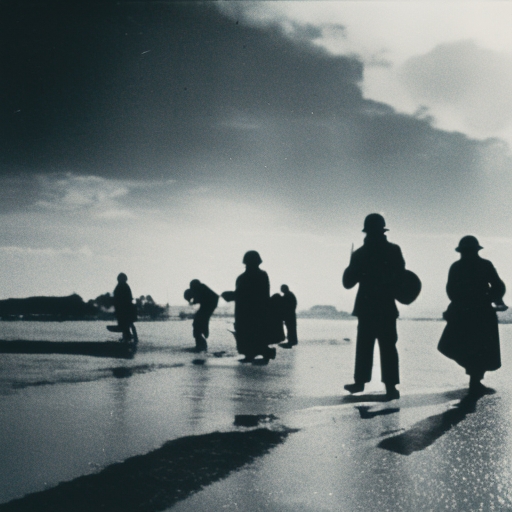Hungnam Evacuation: A Desperate Retreat
The Hungnam evacuation, also known as the Battle of Hungnam, was a massive military operation conducted by United Nations forces during the Korean War. It took place from December 15 to December 24, 1950, and involved the evacuation of over 100,000 troops and civilians from the port city of Hungnam in North Korea.
Background: The Korean War began in June 1950 when North Korean forces invaded South Korea. The United Nations, led by the United States, intervened to support South Korea. However, by late 1950, the situation had turned dire for the UN forces. The Chinese People’s Volunteer Army had joined the conflict, pushing the UN forces back to the southern tip of the Korean Peninsula.
The Decision to Evacuate: With the UN forces facing defeat, General Douglas MacArthur, the commander of the UN forces, proposed a daring plan to evacuate his troops and equipment from the port of Hungnam. The port was strategically important as it was the only major harbor still under UN control. The plan involved a complex operation to load troops, equipment, and supplies onto ships while simultaneously defending against enemy attacks.
The Evacuation Operation: The evacuation operation began on December 15, 1950. UN forces, including American, British, and South Korean troops, worked tirelessly to load personnel and equipment onto ships. The operation faced numerous challenges, including heavy snowfall, freezing temperatures, and constant enemy attacks.
Defending the Perimeter: To protect the evacuation operation, UN forces established a defensive perimeter around the port. They fought off repeated attacks from the North Korean and Chinese forces, who were determined to disrupt the evacuation. The UN forces used artillery, tanks, and air support to repel the enemy attacks and keep the evacuation process going.
Massive Evacuation: Over the course of nine days, more than 100,000 troops and civilians were evacuated from Hungnam. This included not only military personnel but also refugees and Korean civilians who feared reprisals from the advancing communist forces. The evacuation was a logistical feat, with ships shuttling back and forth to transport people and equipment to safety.
Destroying the Port: As the evacuation neared its completion, the decision was made to destroy the port facilities to prevent them from falling into enemy hands. UN forces demolished warehouses, fuel depots, and other infrastructure to render the port unusable. This act ensured that the North Korean and Chinese forces would not be able to benefit from capturing the port.
Aftermath: The Hungnam evacuation was a success for the UN forces. It allowed them to withdraw from North Korea and regroup further south. The operation also saved the lives of thousands of troops and civilians who would have otherwise been captured or killed. The evacuation demonstrated the determination and resourcefulness of the UN forces in the face of adversity.
In conclusion, the Hungnam evacuation was a critical moment in the Korean War. It allowed the UN forces to retreat and regroup while saving the lives of thousands of people. The operation showcased the bravery and resilience of the troops involved and highlighted the logistical challenges of conducting a large-scale evacuation under enemy fire. The Battle of Hungnam remains a testament to the sacrifices made during the Korean War and the determination to protect the lives of those in harm’s way.












